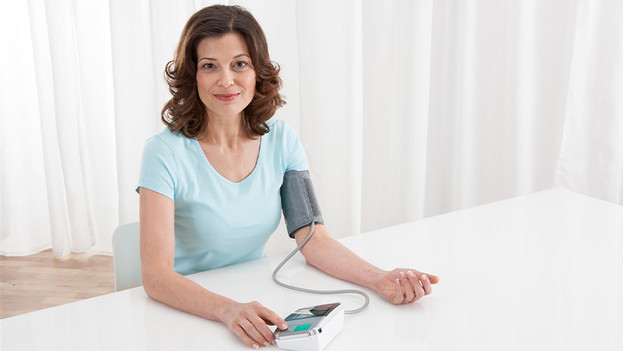
How do you measure your own blood pressure?
Measure your blood pressure in 4 steps

Go through the following 4 steps to accurately measure your own blood pressure.
Step 1: choose the right moment.
Step 2: attach the cuff.
Step 3: perform the measurement accurately.
Step 4: check the blood pressure.
Step 1: choose the right moment

Are you measuring your own blood pressure for the first time? You'll have to measure your blood pressure each morning and evening for a week. That way, you can practice best and get a reliable average. Make sure you don't do any strenuous activities like sports or stressful work in the half hour before the measurement. After you've practiced for a couple of days, it's enough to measure your blood pressure once a month.
Step 2: attach the cuff

Attach the blood pressure monitor to the arm you use the least. Make sure your arm is bare, so the cuff is in direct contact with your skin. Do you have a wrist blood pressure monitor? Attach the appliance to your wrist. Do you have an upper arm blood pressure monitor? Attach the appliance about 2cm above your elbow.
Step 3: perform the measurement accurately

- Before you perform the measurement, sit down on a chair for 5 minutes.
- Make sure you haven't smoked, used medication, and drank alcohol or coffee in the hour before.
- Measure the blood pressure sitting down in a chair with your back against the backrest and your arms resting on a table. Place both feet side by side on the floor.
- Make sure the cuff is properly attached. Not too tight, but definitely not too loose either, with the tube on the inside of your arm.
- Don't talk during the blood pressure reading.
Step 4: check the blood pressure monitor

You can check the information on the screen of the blood pressure monitor or on the cuff itself. This differs per blood pressure monitor. The values are expressed in mmHg, which is millimeters of mercury. The highest number is the systolic pressure and the lowest number is the diastolic pressure. Your blood pressure is normal if it's below 135/90mmHg.


